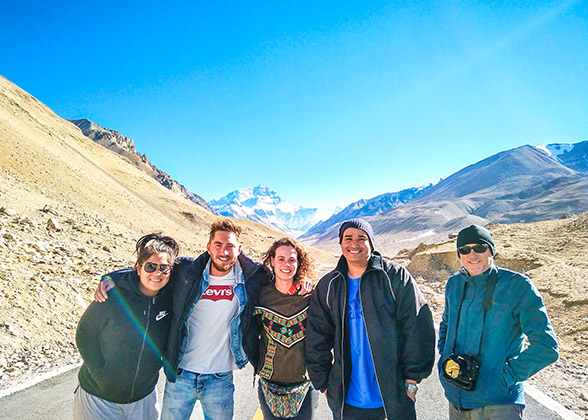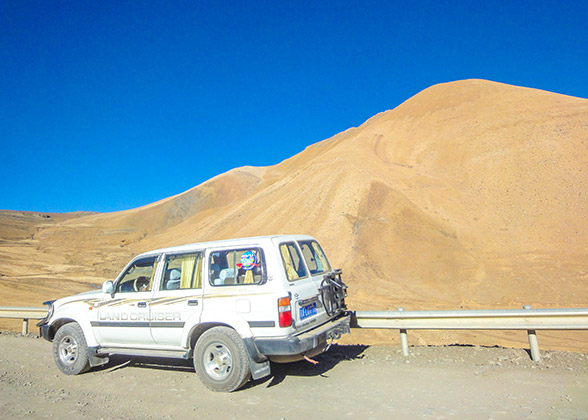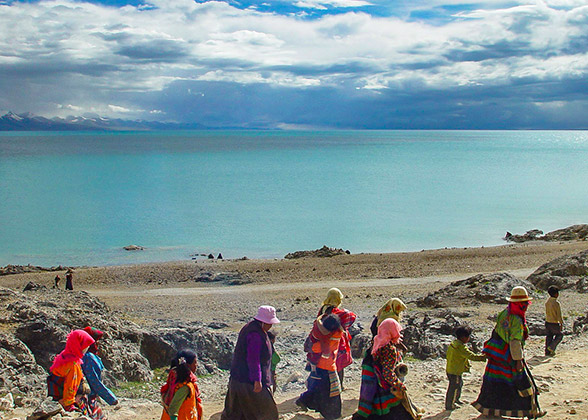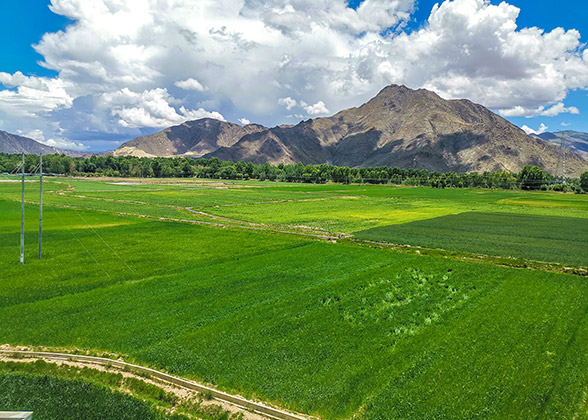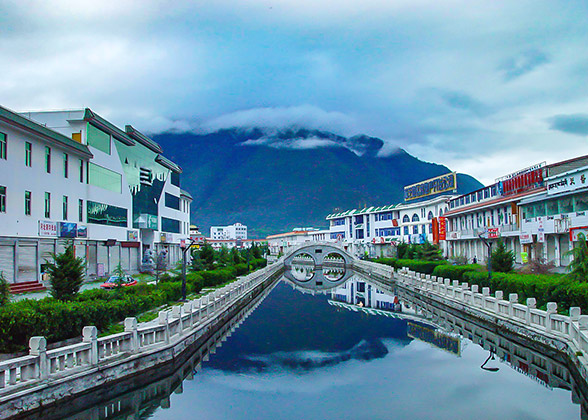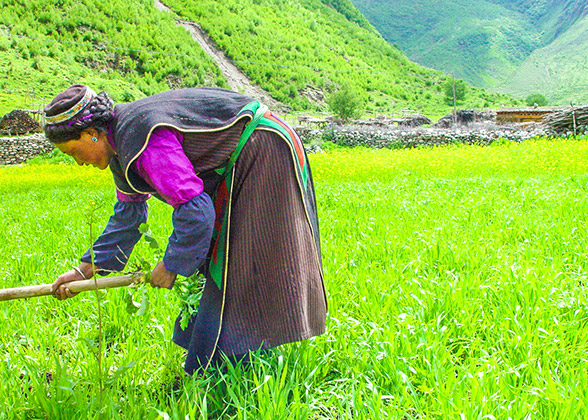Sichuan - Tibet Overland Adventure
Overland travel from Chengdu, the capital of Sichuan, to Tibet can be strenuous and pose some risk. Travelers must pass through high mountains, be wary of river riptides and sometimes encounter a sporadic landslide or two. The natural landscape is spectacular, however. You will see virgin forests, grasslands, glaciers and several grand rivers. This is truly a paradise for photographers and those who love adventure.
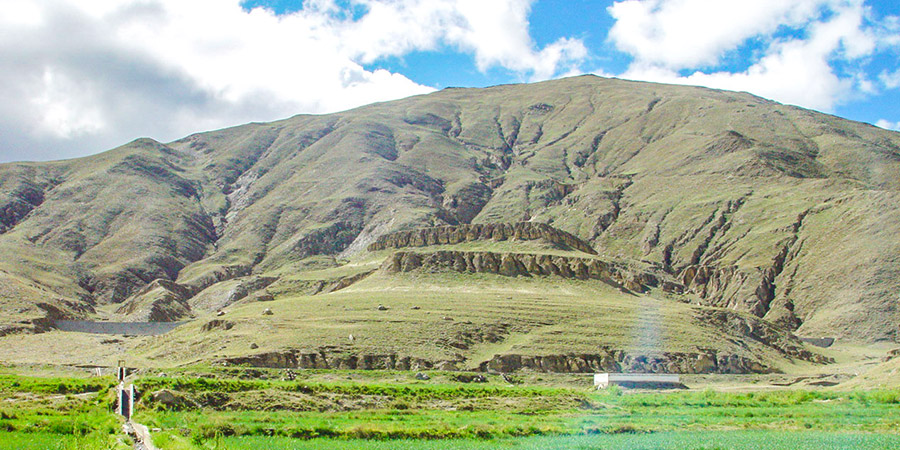 |
| Mountains along National Highway 318 |
Southern Route vs. Northern Route
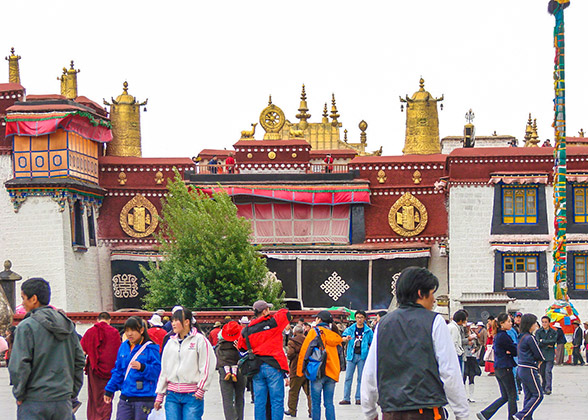 |
| Monastery |
1. The southern route is 2,116 km (1,315 mi) long and visitors go along the National Highway 318, while the northern route is 2,412 km (1,499 mi) mainly along National Highway 317.
2. Compared with the northern route, the southern route has a relatively low altitude.
3. Last, the northern route is featured by more cultural attractions like Tibetan monasteries, while the southern route by scenic natural beauty. You would pass by high mountains, rivers, and lakes along the southern route.
Best Time to Travel Overland from Sichuan to Tibet
The best months to go are May, June, and then from mid-August to October. Traveling during those periods will increase chances of avoiding the rainy and snow seasons that wreak havoc on the road and cause landslides.
Best Car to Use for Sichuan - Tibet Overland Adventure
The best choices for transportation are to charter a jeep or other all-terrain vehicle. If you can form a group, chartering a vehicle is preferred because it provides added flexibility for passengers to stop and go as they please.
7 Days Overland Adventure
1ST Day: 440 km (273 mi), Chengdu – Ya’an – Luding – Kangding – Xindu Bridge – Yajiang
This trip along the southern route begins in Chengdu. At first, drive 130 km (80 miles) west to the world famous 'rainy city' of Ya'an. Then, continue along the Qingyi River, over the Qinghai-Tibetan Plateau – Erlang Mountain and through the longest mountain tunnel (4.17 km or 2.59 miles) in China. Emerging from the tunnel, you will see the magnificent Gonggar Mountain. Then, go down the mountain to the bottom of Dudu River Canyon and visit the famous Luding Bridge, a Qin dynasty (221 - 207 BC) landmark and a critical river crossing during the Long March. Next, proceed through the Zheduo Mountain Pass to the Xindu Bridge. Xindu is heaven for photographers, both amateur and professional. The meandering rivers and boundless grasslands dotted with native houses give the village of Xindu a dreamy Xanadu-like quality. Till now, you have gone for about 366 km (227 miles), and you need to finish another 64 km (40 miles) to arrive at Yajiang River – the destination of today.
|
|
2nd Day: about 405 km (251 mi), Yajiang – Litang – Batang – Mangkang
The journey today will be challenging as travelers will experience an altitude increase of 2500 meters (8,200 feet). The destination, Mangkang County is 3,870 meters high (12,700 feet) located on the eastern bank of the Jinsha River. The county is famous for its rich and colorful folk songs, dances and local drama.
3rd Day: 360 km (220 mi), Mangkang – Dzogang – Bangda – Pasho
From Mangkang County, the journey on the 3rd day will take you past the Daza-chu (Mekong) river, Mt. Dongda, Mts. Dzogang and Bangda 4400 meters or 14,110 feet high. Finally, you have the biggest natural obstacle, Mt. Ngul-chu. After that, go for another 94 km (58 miles) on a road filled with switchbacks, and you will arrive in Pasho and spend the night there.
4th Day: 90 km (55 mi), Pasho – Ranwu
In the morning after a big breakfast, leave for Ranwu Lake and along the way be treated to scenic delights such as hollows, meadows, snow-capped mountains and glaciers. You may stop over at one of the three most famous glaciers in the world - Laigu, for an up-close view. Ranwu is the largest lake in southeast Tibet 3,800 meters (12,470 feet) above sea level and has an area of 22 sq. km. Enjoy the rest of the day at the lake.
|
|
5th Day: 130 km (80 mi), Ranwu – Pomi
Rise early on the fifth day and continue sightseeing at Ranwu Lake. After lunch, go ahead to Pomi and enjoy the most beautiful part of this tour. The road from Ranwu to Pomi is paved with a combination of coal, sand and stones. If you want to get close to Mudui, an oceanic-type glacier, you have to hike for about four hours. The road between Mudui and Pomi is fine.
6th Day: 230 km (140 mi) Pomi – Tangmi – Bayi in Nyingchi
Go west through the virgin forest and head for the last major barrier on the Sichuan-Tibet road, Tangmi within 2 hours. This is the most dangerous road in the southern route, so please watch out when passing through since floods and mud-rock flows frequently occur near this area. Then head for Seche La Mountain, part of the Nyainqentanglha Mountain Range and site of the watershed for the Nyang and Polung Zangbo Rivers. Standing at the mountain pass at 4,728 meters (15,512 feet) above sea level you can admire the sunrise, sea of clouds, endless forests and the grand Namjagbarwa Peak. Finally, head to Bayi Town in Nyingchi to stay overnight.
|
|
7th Day: about 400 km (250 mi) Bayi – Gongbujiangda – Mozhugongka – Lhasa
Along the way enjoy the beautiful Nyang River. After 130 km (80 mi), you would arrive at Gongbujiangda County. Along the journey, you can stop by Basong Lake on the branch road, an alpine lake near the middle and upper reaches of the Ba River, Nyang River's largest tributary. Another highlight of today’s journey is the charming Tsodzong Monastery, which just sits on the island of Basong Lake. The island is a fusion of flora and holy sites. Later, you can continue your journey to Lhasa by returning to the main road. For another 270 km (170 mi) from Gongbujiangda, you will arrive at Lhasa.
Recommended Tours
- Last updated on Oct. 18, 2024 by Zoey Gong -
